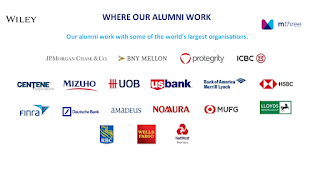Google I/O Free courses 2021
[For beginner]
1| Get started with comment-spam detection
It is an excellent course for beginners, especially if you want to solve the spam issue. It will introduce you to TensorFlow.js and machine learning and help you build a comment-spam detection system using TensorFlow.js.
Click here to watch the video.
2| Get started with mobile text classification
Here, you will learn the concepts behind machine learning and identify spam using text classification ML. Besides this, you will also learn how to:
- Build a basic messaging-style app
- Build a comment-spam machine learning model
- Get started with text classification – Part Two
- Update your app to use a spam-filtering machine learning model
- Go further with text classification
- Create a custom text-classification model with TensorFlow Lite Model Maker
Click here to watch the video.
3| Get started with image classification
In this tutorial, you will get to build your first computer-vision app on Android or iOS and find out how an image classifier capable of recognising hundreds of different types of images is created. Build your first computer-vision app on Android or iOS.
Click here to watch the video
4| Get started with object detection
In this course, you will learn about object detection and how it differs from other image-recognition tasks, such as image classification. It will provide you with learning essentials that will help you build an object detector into your mobile app and integrate an object detector using ML kit object detection API.
Click here to watch the video.
5| Get started with audio classification
Here, you will learn how to use machine learning for Audio Classification, add audio classification to your mobile app and create a basic app for audio classification.
Click here to learn more.
[For intermediate]
6| Go further with audio classification
Here, you will learn how to customise an audio classification model, particularly a pre-trained audio classification model to detect bird sounds.
7| Go further with object detection
In this tutorial, you will get to train an object-detection model using your dataset and deploy it to a mobile application using TensorFlow Lite.
Click here to watch the video.
8| Go further with image classification
Learn how to build a custom model for image classification using TensorFlow Lite Model Maker and integrate it into an app as a custom ML Kit Model.
Click here to watch the video.
9| Go further with comment spam detection
In this tutorial, you will learn how to retrain your comment spam classification model to account for instances it does not classify correctly using TensorFlow.js.
Click here to watch the video.
10| Go further with product image search
You will learn how to build and call a product search backend from the mobile app using Vision API Product Search.
Click here to watch the video.
[Advanced]
11| Building trusted AI products
Using this coding exercise, you will get to build trusted AI products with the PAIR (People + AI Research) guidebook.
Besides learning to build trustworthy, user-centred AI products using PAIR Guidebook, you will also learn:
- What’s new in the PAIR Guidebook’s second edition.
- Go through a series of exercises that highlight opportunities in the AI development process to calibrate user trust, with a focus on data and user-facing explainability.
- Get an introduction to a broader toolkit of materials and resources available for further exploration.
12| Build and deploy a custom object detection model with TensorFlow Lite (Android)
Written by Khanh LeViet, a TensorFlow evangelist at Google, this course will help you train a custom object detection model using a set of training images with TFLite Model Maker, and deploy the model using TFLite Task Library.
Here are the highlights of the course:
- Build an Android app that detects ingredients in images of meals.
- Integrate a TFLite pre-trained object detection model and see the limit of what the model can detect.
- Train a custom object detection model to detect the ingredients/components of a meal using a custom dataset called salad and TFLite Model Maker.
- Deploy the custom model to the Android app using TFLite Task Library .
13| TensorFlow.js: Handwritten digit recognition with CNNs
In this tutorial, you’ll learn to build a TensorFlow.js model to recognise handwritten digits with a convolutional neural network. You will also learn to use supervised learning. The course is designed by Google software engineer Yannick Assogba.
Here are the things you will learn from this course:
- TensorFlow.js syntax for creating convolutional models using the TensorFlow.js Layers API.
- Formulating classification tasks in TensorFlow.js.
- How to monitor in-browser training using the tfjs-vis library.
14| TensorFlow.js: Making predictions from 2D data
Written by Assogba, this coding exercise will help you train a model to make predictions from numerical data describing a set of cars. With this course, you will get familiar with the basic terminology, concepts and syntax around training models with TensorFlow.js.
At the end of this course, you will learn:
- Best practices for data preparation for machine learning including shuffling and normalisation.
- TensorFlow.js syntax for creating models using the tf.layers.API.
- How to monitor in-browser training using the tfjs-vis library.
15| TensorFlow.js: Make a smart webcam in JS with a pre-trained ML model
This coding exercise will help you create a webpage that uses machine learning directly in the web browser via TensorFlow.js to classify and detect common objects from a live webcam stream, where it will be able to identify, objectify and get the coordinates of the bounding box for each object it finds.
In this course, you will earn how to:
- Load a pre-trained TensorFlow.js model.
- Grab data from a live webcam stream and draw it to canvas.
- Classify an image frame to find the bounding box(s) of any object(s) the model has been trained to recognise.
- Use the data passed back from the model to highlight found objects.
16 | TensorFlow.js: Use Firebase Hosting to deploy and host a machine learning model at scale
In this coding exercise, you will get familiar with Firebase Hosting. Moreover, you will be able to develop an end-to-end system capable of hosting and running a custom saved TensorFlow.js model along with its related assets such as HTML, CSS and JavaScript.
Additionally, you will be able to create a simple, lightweight model and host it via Firebase Hosting. You will learn how to:
- Save a custom TensorFlow.js model in the right format.
- Set Up a Firebase account for hosting.
- Deploy your assets to Firebase Hosting.
- Deploy new versions of a model.
17| TensorFlow.js: Transfer learning image classifier
Written by a software engineer at Google Nikhil Thorat, in this coding exercise, you will learn how to build a simple teachable machine. In this course, you will learn:
- How to load pretrained MobileNet model.
- How to make predictions through the webcam.
- How to use intermediate activations of MobileNet to do transfer learning on a new set of classes you decide on the fly with the webcam.
18| Build and deploy a model with Vertex AI
Here, you will learn how to use Vertex.AI, a newly announced managed ML platform by Google Cloud, to build end-to-end machine learning workflows.
At the end of this exercise, you will learn how to:
- Submit a custom model training job to Vertex.AI
- Deploy your trained model to an endpoint, and use that endpoint to get predictions
Note: The total cost to run this exercise on Google Cloud is about $2.



